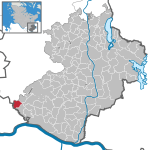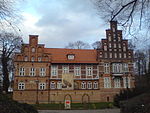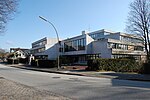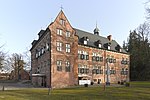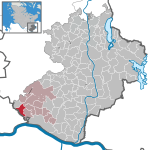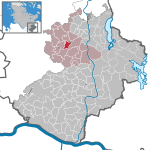Hamburg Observatory

Hamburg Observatory (German: Hamburger Sternwarte) is an astronomical observatory located in the Bergedorf borough of the city of Hamburg in northern Germany. It is owned and operated by the University of Hamburg, Germany since 1968, although it was founded in 1825 by the City of Hamburg and moved to its present location in 1912. It has operated telescopes at Bergedorf, at two previous locations in Hamburg, at other observatories around the world, and it has also supported space missions. The largest near-Earth object was discovered at this Observatory by German astronomer Walter Baade at the Bergedorf Observatory in Hamburg on 23 October 1924. That asteroid, 1036 Ganymed is about 20 miles (35 km) in diameter.The Hamburg 1-meter reflector telescope (first light 1911) was one of the biggest telescopes in Europe at that time, and by some measures the fourth largest in the World. The Observatory also has an old style Great Refractor (a Großen Refraktor), a long telescope with a lens (60 cm/~23.6 in aperture) with a tube focal length of 9 meters (~10 yards), and there is also a smaller one from the 19th century that has survived. Another historical item of significance is the first and original Schmidt telescope, a type noted for its wide-field views.Among its achievements, the director of the Observatory won the 1854 Gold Medal of the Royal Astronomical Society for an 1852 star catalog.
Excerpt from the Wikipedia article Hamburg Observatory (License: CC BY-SA 3.0, Authors, Images).Hamburg Observatory
Gojenbergsweg, Hamburg Bergedorf
Geographical coordinates (GPS) Address Website External links Nearby Places Show on map
Geographical coordinates (GPS)
| Latitude | Longitude |
|---|---|
| N 53.48 ° | E 10.241 ° |
Address
Hamburger Sternwarte
Gojenbergsweg 112
21029 Hamburg, Bergedorf
Germany
Open on Google Maps
